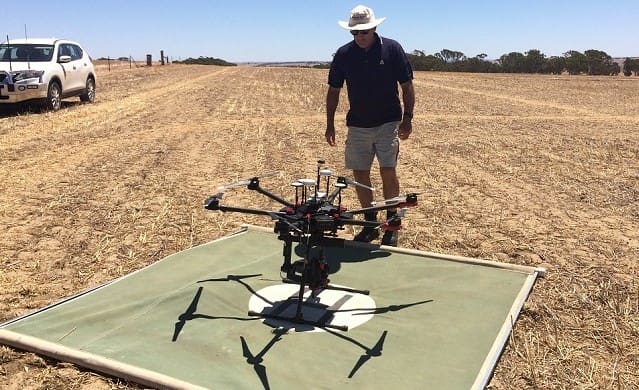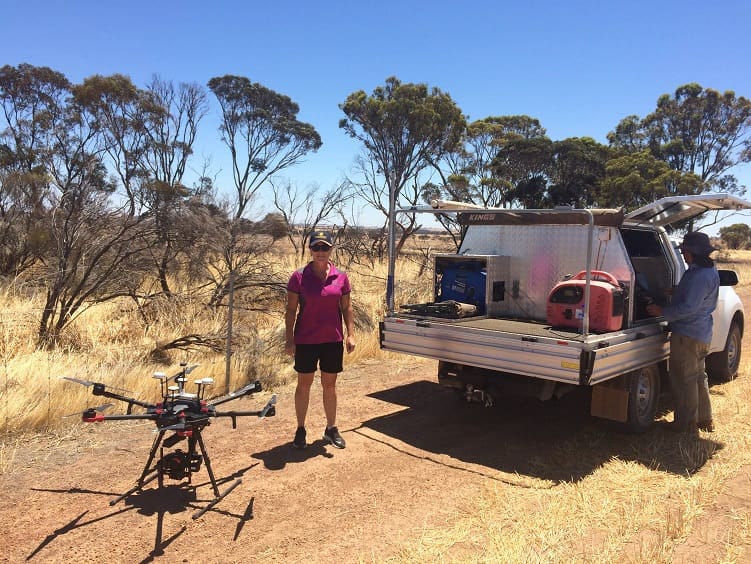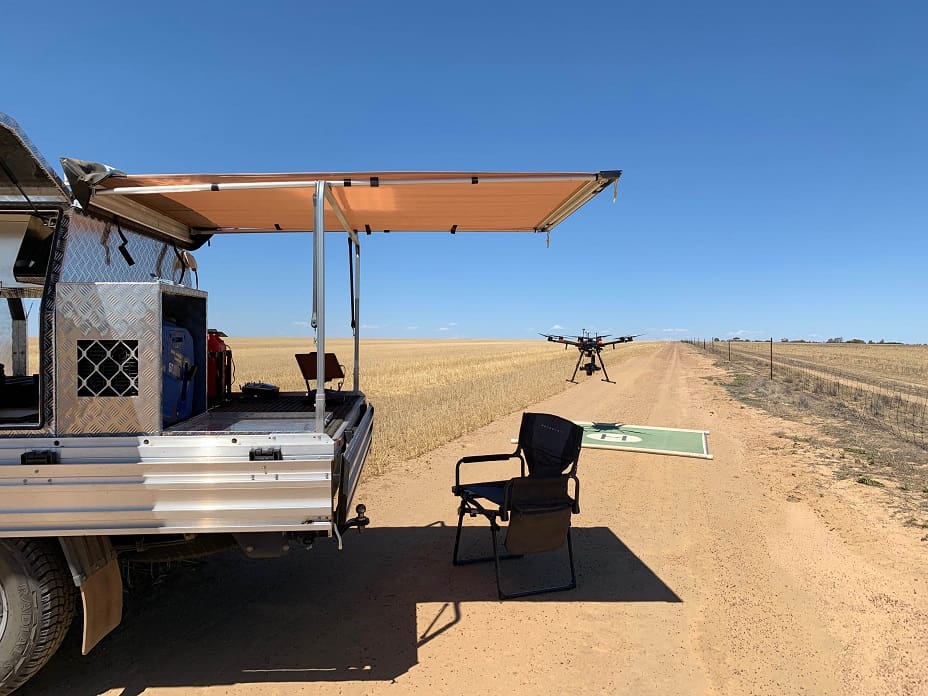
Skeleton Weed Program manager Martin Atwell with drone technology used in the 2018/19 search season to undertake targeted surveillance.
DRONES have been taking to the skies across the Western Australian Wheatbelt in a bid to improve surveillance and control of a key agricultural pest plant, skeleton weed.
Skeleton weed is a declared plant in WA and can reduce crop yields by competing for moisture and nutrients.
The Skeleton Weed Program, funded through the Grains, Seeds and Hay Industry Funding Scheme (IFS), is adopting new remote sensing data collection technology to complement traditional surveillance methods.
Grains, Seeds and Hay IFS Management Committee chair Rohan Day said the IFS began a project in 2015 to investigate the potential of remotely piloted aircraft, or drones, as a more efficient way to search for skeleton weed.
“There were two key areas of the project, to test the abilities of various drones and camera technologies, and to promote the development of machine learning software to identify and map skeleton weed from images captured by drones,” Mr Day said.
This has resulted in Precise AI, a company specialising in developing software applications to process large amounts of remote sensing data, to apply its Optiweed program, a unique weed mapping and detection platform, to the detection of skeleton weed.
“This platform has progressed from detecting clumps of skeleton weed to being able to detect individual skeleton weed plants and their precise GPS location within the paddock,” Mr Day said.

Lakes Local Action Group Skeleton Weed coordinator Lynette Carruthers with a drone used in skeleton weed surveillance over summer.
Skeleton Weed Program manager Martin Atwell, of the Department of Primary Industries and Regional Development, said the skeleton weed surveillance activity aimed to cover up to 40,000 hectares of farmland per year.
The surveillance activity is a vital part of the overall program.
“Drone technology was used in the 2018/19 search season to undertake targeted surveillance of uninfested areas where skeleton weed plants were most likely to spread,” Mr Atwell said.
Previously all surveillance was undertaken by farmers and program staff in vehicles. While this has worked well, there are some potential advantages in using drones.
“This first large-scale surveillance test of the drone and software application system worked well,” Mr Atwell said.
“The work is currently delivering a good skeleton weed detection rate at a similar cost to the current methods of surveillance.
“This work is still new, and many important procedures and workflows were developed in the 2018/19 search season which will greatly improve the drone surveillance undertaken in future.”
Mr Day said the future potential offered by the technology included improved cost-effectiveness of skeleton weed surveillance.
“This means reduced costs to the industry for funding for the program,” Mr Day said. “It also minimises the impact of vehicle traffic on farmland.”

The Skeleton Weed Program, funded through the Grains, Seeds and Hay Industry Funding Scheme, is adopting new remote sensing data collection technology including drones to complement traditional surveillance methods.
Source: DPIRD, agric.wa.gov.au/skeletonweed


HAVE YOUR SAY